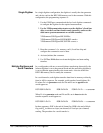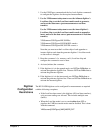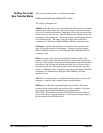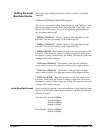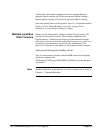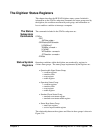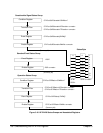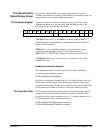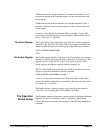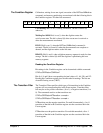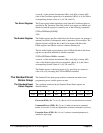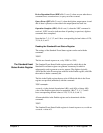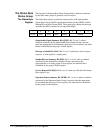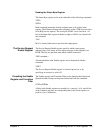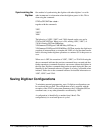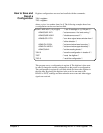
NTRansition sets the negative transition. For each bit unmasked, a 1-to-0
transition of that bit in the Condition register sets the associated bit in the
Event register.
PTRansition sets the positive transition. For each bit unmasked, a 0-to-1
transition of that bit in the Condition register sets the associated bit in the
Event register.
<unmask > is the decimal, hexadecimal (#H), octal (#Q), or binary (#B)
value of the Condition register bit to be unmasked. (The decimal values of
bits 0, 2, and 8 are 1, 4, and 256.)
The Event Register The Event register latches transition events from the Condition register as
specified by the Transition Filter. Bits in the Event register are latched and
remain set until the register is cleared by one of the following commands:
STATus:QUEStionable[:EVENt]?
*CLS
The Enable Register The Enable register specifies which bits in the Event register can generate a
summary bit which is subsequently used to generate a service request. The
digitizer logically ANDs the bits in the Event register with bits in the
Enable register, and ORs the results to obtain a summary bit.
The bits in the Enable register that are to be ANDed with bits in the Event
register are specified (unmasked) with the command:
STATus:QUEStionable:ENABle <
unmask
>
<unmask > is the decimal, hexadecimal (#H), octal (#Q), or binary (#B)
value of the Enable register bit to be unmasked. (The decimal values of bits
0, 2, and 8 are 1, 4, and 256.)
The Enable register is cleared at power-on, by specifying an <unmask >
value of 0, or by executing the STATus:PRESet command.
The Operation
Status Group
The Operation status group monitors current operating conditions within the
digitizer. The specific conditions include: CALibrating, MEASuring,
entering the wait-for-arm state, and execution of the INITiate[:IMMediate]
command.
168 Understanding the HP E1429 Digitizer Chapter 3



